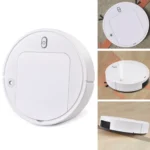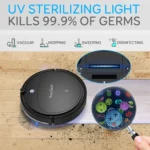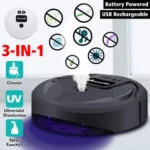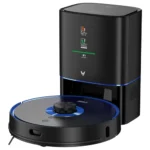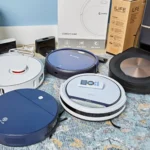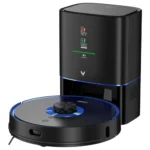When it comes to cleaning, we all want to ensure that our living spaces are as germ-free as possible. With the recent pandemic and increased awareness of hygiene, the demand for effective and efficient cleaning methods has risen. While traditional cleaning methods have been the norm for years, UV sterilization technology has emerged as a newer, more high-tech option. But which one is more effective? Is UV sterilization technology truly worth the investment? In this article, we’ll delve into the world of UV sterilization technology and traditional cleaning methods, comparing their effectiveness, cost, and ease of use to determine which method reigns supreme. Let’s shine a light on the best cleaning practices for your unique needs.
What is UV Sterilization Technology?
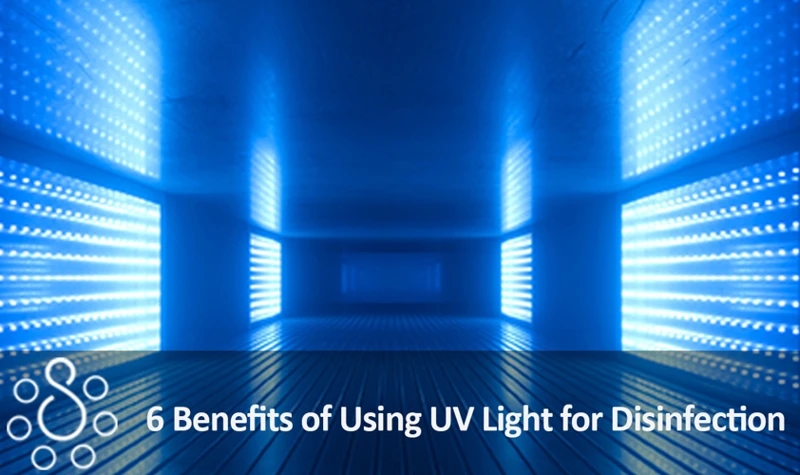
UV Sterilization Technology is a revolutionary cleaning method that has gained popularity in recent years. It utilizes ultraviolet light to eliminate harmful bacteria, viruses, and allergens from surfaces and the air. This technology has become increasingly popular in the home cleaning industry, and many smart vacuum cleaners now incorporate it for a more effective clean. If you’re curious to learn more about UV Sterilization Technology, check out our guide on smart vacuum cleansers with UV sterilization for allergies.
How does UV Sterilization Technology work?
UV Sterilization Technology is a modern method of cleaning and sanitizing surfaces using ultraviolet light. This technology works by damaging the DNA or RNA of microorganisms, such as bacteria and viruses, making them unable to reproduce and render them harmless. The UV light breaks down the molecular bonds that hold the genetic material of these microorganisms together, causing mutations that prevent their ability to replicate. Some of the modes of action which include photochemical and photophysical interactions cause the death of the microorganisms through cell destruction. Compared to traditional cleaning methods, UV sterilization technology is more efficient in eliminating pathogenic microorganisms because it reaches areas that are difficult to reach and cleans uniformly over large surfaces.
The UV sterilization process can be broken down into three simple steps:
- Exposure: The surface to be cleaned is exposed to UV-C rays for a specific amount of time. The duration of exposure and the intensity of light will depend on the type of surface being sanitized, as different materials will react differently to the UV-C light. For example, delicate fabrics may require less time under the UV light to avoid damage, while hard surfaces require a longer period of exposure to effectively kill microorganisms.
- Penetration: During exposure, the UV-C rays penetrate the cell walls of microorganisms, causing damage to their DNA or RNA. This prevents them from reproducing and making them harmless. Since UV-C rays do not penetrate solid surfaces or opaque objects, it is important to ensure that the surface is free of any type of debris before starting the UV sterilization process. Otherwise, the debris will shield the microorganisms from the UV-C light and prevent them from being destroyed.
- Deactivation: Once the UV sterilization process is complete, the microorganisms are considered to be deactivated or dead. This means that they are no longer able to reproduce and cause illness or infections. The surface is now clean, and it is safe to use. It is important to note that UV sterilization technology does not remove dirt or debris from the surface being cleaned. It is recommended to clean the surface before the UV sterilization process to obtain the best results.
UV sterilization technology has proven to be an effective cleaning method that eliminates more than 99% of bacteria, viruses, and germs. The technology is becoming increasingly popular, and its use has spread across various industries such as healthcare, hospitality, and food processing. If you want to learn more about the benefits of this technology, you can visit our previous article about the topic.
What are the benefits of UV Sterilization Technology?
UV Sterilization Technology has a plethora of benefits over Traditional Cleaning Methods. Here are some of them:
| Benefits of UV Sterilization Technology |
|---|
| Effective against Germs: UV Sterilization Technology is effective against germs, bacteria, and viruses that are difficult to eradicate with Traditional Cleaning Methods. |
| Eco-friendly: The use of UV Sterilization Technology does not involve the use of harsh chemicals, making it an eco-friendly solution for cleaning. |
| Cost-Effective: In the long run, UV Sterilization Technology is cost-effective as it reduces the need for expensive cleaning agents and disinfectants. |
| Less Physical Strain: UV Sterilization Technology does not involve scrubbing, wiping or vacuuming, reducing the physical strain involved in Traditional Cleaning Methods. |
| Convenient: With UV Sterilization Technology, you don’t have to rearrange your room or move objects to clean as the UV light can penetrate hard-to-reach areas easily. |
| Suitable for Allergy Sufferers: UV Sterilization Technology is ideal for allergy sufferers as it eliminates allergens that cause allergies such as dust mites and pet dander. |
If you want to learn more about smart cleaning solutions that utilize UV Sterilization Technology, check out our article on smart vacuum cleansers with UV Sterilization for allergies, or browse our top 5 smart vacuums with UV technology list for an in-depth overview of the smart vacuums available in the market.
What are the limitations of UV Sterilization Technology?
While UV Sterilization Technology has many benefits, it also has some limitations that should be considered before making a decision on whether to use it as your primary cleaning method.
1. Limited Coverage: One of the limitations of UV Sterilization technology is that it is only effective in areas where direct UV-C light is able to reach. This limits its effectiveness in cleaning areas where there are obstacles or hard-to-reach places. UV Sterilization technology is not effective in porous surfaces or surfaces that are uneven.
2. Time Consuming: Another limitation of UV Sterilization technology is that it can be time-consuming. It requires a minimum amount of time to effectively eliminate all germs, bacteria and viruses in a given space. Depending on the size of the surface that needs to be cleaned, the process can take several minutes or even hours.
3. Harmful to Eyes and Skin: UV-C rays can be harmful to the skin and eyes if exposure is prolonged. Care must be taken when using UV Sterilization technology. It is important to wear protective gear such as gloves and eyewear to avoid exposure.
4. High Cost: Another limitation of UV Sterilization technology is that it can be more expensive than traditional cleaning methods. The initial cost of purchasing UV lamps or UV-C enabled devices can be relatively higher compared to traditional cleaning equipment.
5. UV Sterilization technology may Not be Suitable for All Surfaces: It is important to note that UV Sterilization technology may not be suitable for all surfaces or materials. It may cause damage or discoloration to some materials, especially over time, affecting the appearance and longevity of surfaces. Prior to use, it’s important to verify and check the surface is suitable for UV sterilization cleaning.
While UV Sterilization technology can be an effective method of cleaning, it is important to consider all of its limitations when deciding whether to use it as a primary method of cleaning. We suggest using UV sterilization as a complement to traditional cleaning methods, to ensure the best and most hygienic cleaning practices for your space.
What are Traditional Cleaning Methods?

When it comes to maintaining cleanliness in our homes or workplaces, traditional cleaning methods play a significant role. These methods have been in use for decades and involve the use of cleaning agents, brushes, and other cleaning tools. However, with the emergence of advanced technologies such as UV Sterilization Technology, there is a debate on which method is more effective. In this section, we will discuss traditional cleaning methods in more detail and their effectiveness in comparison to UV Sterilization Technology. To learn more about UV Sterilization Technology, you can read our previous article on UV Sterilization Smart Vacuums.
How does Traditional Cleaning work?
Traditional cleaning methods involve physically scrubbing or wiping surfaces to remove dirt, grime, and germs. This can be done using a variety of tools and cleaning agents such as sponges, brushes, cloths, and sprays. Here is a list of common traditional cleaning methods:
- Scrubbing: This involves using a scrub brush or sponge to physically remove dirt or grime from surfaces. In some cases, cleaning agents may be used to enhance the cleaning process.
- Wiping: Wiping involves using a cloth or paper towel to remove surface debris, dust or spills.
- Vacuuming: Vacuuming is another popular cleaning method that sucks up dirt and dust particles from surfaces, including carpets, floors, and upholstery. Some vacuum cleaners come with attachments that can be used to clean hard-to-reach areas or delicate surfaces.
- Mopping: This is a common method used to clean floors. A mop is used to apply water or a cleaning solution, and then excess liquid is removed through wringing or vacuuming.
- Dusting: Dusting involves using a cloth or duster to physically remove dust from surfaces such as furniture, blinds, and baseboards.
While traditional cleaning methods can effectively remove visible dirt and grime, they may not be as effective at removing germs and bacteria. This is because traditional cleaning methods can leave behind bacteria or viruses that can quickly spread and cause illnesses. Additionally, traditional cleaning methods can be time-consuming and physically demanding.
To improve the effectiveness of traditional cleaning methods, some cleaning tools, such as vacuums, are now equipped with UV technology. For example, some smart vacuums use UV-C technology to kill germs and bacteria on surfaces. To learn more about the difference between UV-C and UV-A technology, check out our article on UVC vs UVA in Smart Vacs. Alternatively, check out our article on Clean Smart Vacuum with UV Tech.
What are the benefits of Traditional Cleaning Methods?
Traditional cleaning methods have been used for centuries to maintain cleanliness and hygiene in homes, workplaces, and public spaces. While technological advancements have introduced new cleaning methods, traditional cleaning methods remain popular due to their many benefits, including:
| Benefits of Traditional Cleaning Methods |
|---|
| 1. Cost-effective: Traditional cleaning methods such as mopping, sweeping and dusting are typically less expensive compared to UV sterilization technology, making them a more affordable solution for individuals and businesses with limited budgets. |
| 2. Ease of use: Traditional cleaning methods are easy to understand and require minimal training, making it easier for individuals to clean their homes or offices on their own. |
| 3. Familiarity: Traditional cleaning methods have been used for generations and are thus familiar to most people, which can make them more comfortable using these cleaning methods over newer technologies. |
| 4. Flexibility: Traditional cleaning methods can be used on a variety of surfaces and materials, including floors, walls, carpets, furniture, and more. |
| 5. Control: With traditional cleaning methods, individuals have more control over the amount of cleaning chemicals and detergents used, which can be very useful for those who have sensitivities or allergies. |
| 6. Immediate results: Traditional cleaning methods such as dusting, mopping or wiping provide immediate results, allowing individuals and businesses to see a visible difference right away. |
While UV sterilization technology offers many benefits, traditional cleaning methods also provide various advantages making them an excellent choice when deciding how to maintain cleanliness and hygiene in various settings.
What are the limitations of Traditional Cleaning Methods?
Traditional cleaning methods have been in use for decades, and while they might be effective at removing dirt and grime, they also come with several limitations. These limitations include:
| Limitations of Traditional Cleaning Methods |
|---|
| Chemical exposure: |
| Many traditional cleaning products contain harsh chemicals that can be harmful to humans and the environment. Exposure to these chemicals can cause skin irritation, respiratory problems, and other health issues. |
| Surface damage: |
| Traditional cleaning methods like scrubbing and using abrasive cleaners can cause damage to delicate surfaces like wood and marble. Over time, this can reduce the lifespan of these surfaces and make them look worn and dull. |
| Inefficient cleaning: |
| Traditional cleaning methods like mopping and wiping can leave behind bacteria and germs that cause infections and illnesses. This is because these methods only remove surface-level dirt and grime, while bacteria and germs can thrive in hidden corners and crevices. |
| Inconvenient and time-consuming: |
| Traditional cleaning methods can take up a lot of time and effort, especially when dealing with larger spaces or stubborn stains. This can be inconvenient for busy people who might have other priorities. |
It is clear that while traditional cleaning methods might have been effective in the past, they come with several limitations that could make them less attractive to modern consumers. These limitations, coupled with advancements in UV sterilization technology, make it easier for people to choose a more efficient and healthier cleaning method.
UV Sterilization Technology Vs. Traditional Cleaning Methods: A Comparison

When it comes to cleaning and disinfecting surfaces, there are different methods available to choose from. Two of the most popular options are UV sterilization technology and traditional cleaning methods. While both aim to eliminate harmful bacteria and viruses, there are significant differences between them. In this section, we will compare the effectiveness, cost, and ease of use of UV sterilization technology and traditional cleaning methods to help you make an informed decision for your cleaning needs.
The effectiveness of UV Sterilization Technology vs. Traditional Cleaning Methods
When it comes to the effectiveness of UV Sterilization Technology vs. Traditional Cleaning Methods, there are several factors to consider. Let’s take a look at some of the key differences:
| UV Sterilization Technology | Traditional Cleaning Methods | |
|---|---|---|
| Ability to Kill Germs | UV Sterilization Technology is highly effective at killing germs, bacteria, and viruses. It has been shown to be up to 99.9% effective at eliminating harmful pathogens.1 | Traditional Cleaning Methods can also be effective at killing germs, but they may not be as thorough as UV Sterilization. The effectiveness of traditional cleaning methods depends on the type of cleaner used and the diligence of the person doing the cleaning. |
| Speed of Cleaning | UV Sterilization Technology is fast and efficient. It can sterilize a surface in as little as 10 seconds.2 | Traditional Cleaning Methods can be time-consuming, especially if you’re trying to clean a large area or a hard-to-reach spot. They also require more effort than UV Sterilization Technology, which can be as simple as waving a wand over a surface. |
| Effectiveness on Different Surfaces | UV Sterilization Technology can be used on a wide range of surfaces, from countertops to keyboards to medical equipment.3 | Traditional Cleaning Methods may be more limited in their effectiveness, depending on the type of surface being cleaned. For example, some cleaners may be too harsh for delicate materials, while others may not be effective on certain types of dirt or stains. |
While both UV Sterilization Technology and Traditional Cleaning Methods can be effective at cleaning and sanitizing surfaces, UV technology offers some unique advantages. It is incredibly fast, highly effective at killing germs, and can be used on a wide range of surfaces. That said, it’s important to remember that UV Sterilization is not a replacement for traditional cleaning methods. Regular cleaning and sanitation are still important for maintaining a healthy environment.
The cost of UV Sterilization Technology vs. Traditional Cleaning Methods
One of the most important factors to consider when choosing between UV sterilization technology and traditional cleaning methods is the cost. While both options come with their own benefits and limitations, cost can often be the deciding factor for many people.
UV Sterilization Technology Cost
The cost of UV sterilization technology varies depending on the type of equipment you are looking to purchase. Generally, UV sterilization wands and handheld devices are more affordable and cost anywhere from $20 to $100. However, for larger and more complex equipment, such as UV sterilization cabinets for medical equipment or air purifiers, the cost can range from a few hundred dollars to several thousand.
It’s important to note that although the initial cost of UV sterilization technology might seem high, its efficiency and durability make it a cost-effective solution in the long run. Unlike traditional cleaning methods, UV sterilization technology is a one-time investment as it doesn’t require any additional cleaning solutions, which can be expensive.
Traditional Cleaning Methods Cost
When it comes to traditional cleaning methods, the cost is typically lower than UV sterilization technology. However, it’s worth noting that the cost can add up over time due to the need for cleaning solutions, equipment, and maintenance.
For example, the cost of cleaning solutions varies depending on the brand and type of cleaning product you are using. On average, cleaning solutions cost between $5 and $20 per bottle, and an average household might use several bottles per month. Additionally, traditional cleaning methods require equipment such as mops, brushes, and vacuum cleaners. These items have an initial cost, but they also require regular maintenance and replacement, which can be costly.
The cost of UV sterilization technology is generally higher than traditional cleaning methods. However, the long-term benefits and efficiency of UV sterilization technology can make it a cost-effective solution over time. On the other hand, traditional cleaning methods might be a more economical option for those who are on a tight budget. Ultimately, the choice between UV sterilization technology and traditional cleaning methods comes down to personal preferences and priorities.
The ease of use of UV Sterilization Technology vs. Traditional Cleaning Methods
When it comes to the ease of use, both UV sterilization technology and traditional cleaning methods have their own advantages and disadvantages. However, it’s essential to determine which one suits your needs and preference better.
UV sterilization technology is relatively easy to use. Once the device is set up, you can activate it with a push of a button. Then, you need to move the UV-C light wand across the surface or object you want to clean slowly. It’s recommended to use the device at a distance of 1-2 inches from the object to get the best result. After a few minutes, the device will emit a signal and indicate that the cleaning process is completed.
On the other hand, traditional cleaning methods require more physical effort from the user. Depending on the type of cleaning, you may need to use different tools, such as a mop, brush, or vacuum cleaner, and cleaning chemicals. The process could take longer, especially for deep cleaning tasks.
To illustrate further, here’s a comparison table of the ease of use of UV sterilization technology and traditional cleaning methods:
| UV Sterilization Technology | Traditional Cleaning Methods | |
|---|---|---|
| Effort needed | Minimal physical effort is required; mostly handheld devices | More physical effort is required using cleaning tools and chemicals |
| Time needed | Quick cleaning time; typically takes a few minutes or less | Cleaning time varies depending on the task, could take up to several hours |
| Simplicity | Simple and straightforward; no learning curve needed | Could be complicated, especially for deep cleaning tasks, and requires knowledge of cleaning products and tools |
| Portability | Portable and easy to move around | Bulky and sometimes difficult to move around |
As shown in the table, UV sterilization technology requires minimal physical effort, quick cleaning time, and easy to use, making it an excellent choice for people who prefer a hassle-free and efficient cleaning method. On the other hand, traditional cleaning methods may require more physical effort and time, making it more suitable for deep cleaning tasks or when a thorough cleaning is needed. Ultimately, it’s up to you to choose which method best suits your needs and preferences.
Factors to Consider When Choosing Between UV Sterilization Technology and Traditional Cleaning Methods
When it comes to deciding between UV Sterilization Technology and Traditional Cleaning Methods, there are several important factors to take into consideration. As we’ve discussed earlier, both methods have their respective advantages and limitations, so it’s crucial to think about your unique situation and individual needs before making a final decision. In this section, we’ll outline some key factors that can influence your choice between these two cleaning methods. Keep in mind that every scenario is different, and what works for one person may not be the best option for another. So, let’s dive in and explore the important factors that can impact your decision-making process.
Type of Surface or Material to Clean
When choosing between UV sterilization technology and traditional cleaning methods, it is important to consider the type of surface or material that needs to be cleaned. Different surfaces or materials may require different cleaning methods to effectively remove contaminants.
Here is a breakdown of surfaces and materials and the cleaning methods that work best:
| Surface/Material | Best Cleaning Method |
|---|---|
| Glass | UV sterilization technology or traditional cleaning methods such as glass cleaner and microfiber cloth |
| Plastic | UV sterilization technology or traditional cleaning methods such as soap and water or all-purpose cleaner and soft cloth |
| Metal | Traditional cleaning methods such as soap and water or all-purpose cleaner and soft cloth. UV sterilization technology may not effectively remove all contaminants on metal surfaces. |
| Fabric | Traditional cleaning methods such as washing machine or dry cleaning. UV sterilization technology is not effective on fabric surfaces. |
| Leather | Traditional cleaning methods such as leather cleaner and soft cloth. UV sterilization technology may damage the leather surface. |
It is important to note that not all surfaces or materials are suitable for UV sterilization technology. In general, non-porous surfaces like glass and plastic are better suited for UV sterilization, while porous surfaces like fabric and leather may not be effectively cleaned with UV light.
When considering the type of surface or material to clean, it is also important to factor in any sensitivities or allergies. Traditional cleaning methods that involve harsh chemicals may not be suitable for individuals with allergies or sensitivities. UV sterilization technology, on the other hand, uses no chemicals and may be a safer option for those with sensitivities.
When choosing between UV sterilization technology and traditional cleaning methods, it is important to consider the type of surface or material to be cleaned. This will help determine the most effective and safe cleaning method to remove contaminants and keep the area clean and sanitary.
Type of Contamination or Dirt to Remove
When it comes to choosing between UV sterilization technology and traditional cleaning methods, one of the most critical factors to consider is the type of contamination or dirt that needs to be removed. Depending on the severity and nature of the mess, one method may be more effective than the other.
1. Bacteria and Viruses
UV sterilization technology is highly effective against bacteria and viruses. When exposed to UV light, their DNA is damaged, rendering them unable to reproduce or infect. However, traditional cleaning methods such as wiping, scrubbing, and disinfecting can also eliminate these microorganisms.
2. Mold and Fungi
Mold and fungi are notorious for causing allergies and respiratory problems in humans. They thrive in damp and humid environments and can be challenging to eliminate permanently. UV sterilization technology can kill mold and fungi effectively, as it can penetrate surfaces where spores may be trapped. However, traditional methods such as scrubbing and using fungicides can also be effective if done correctly.
3. Dirt and Dust
When it comes to dust and dirt, traditional cleaning methods are usually more effective. UV sterilization technology does not remove dust or debris, but rather sterilizes surfaces. So, before using UV sterilization technology, it is crucial to remove visible dirt and debris physically.
4. Chemical Residue
Chemical residue or build-up on surfaces can be toxic, especially in food processing plants or medical environments. UV sterilization technology is often preferred over traditional methods as it requires no chemicals or disinfectants to work. It is environmentally friendly and leaves no residue, making it an ideal option for facilities that require sanitary conditions.
The type of contamination or dirt to remove should be considered when choosing between UV sterilization technology and traditional cleaning methods. While both methods have their advantages and disadvantages, the nature and severity of the mess should dictate which method to use.
Budget and Maintenance Costs
When it comes to choosing between UV Sterilization Technology and Traditional Cleaning Methods, one of the most important factors to consider is the budget and maintenance costs. While both options come with their own set of costs and expenses, it’s essential to weigh the pros and cons of each before making a decision.
Costs of UV Sterilization Technology:
- Initial Purchase Cost: The cost of UV Sterilization Technology devices can range from a few hundred to a few thousand dollars, depending on the size, quality, and features.
- Replacement Costs: UV-C lamps require replacement every 6-12 months, and the cost can range from $50-$100 for each lamp. If the device’s bulbs are damaged, it can cost a few hundred dollars to replace them.
- Energy Costs: UV Sterilization Technology devices require electricity to run, and the costs can add up over time, depending on usage.
- Maintenance Costs: Additional costs, such as cleaning supplies or maintenance fees, may also apply when using UV Sterilization Technology devices.
Costs of Traditional Cleaning Methods:
- Cleaning Supplies: Traditional cleaning methods require cleaning supplies such as soap, water, bleach, and disinfectants. The cost of these supplies can vary depending on the brand and type of cleaning solution used.
- Disposable Materials: Some traditional cleaning methods, such as using paper towels, require disposable materials that can add up in cost over time.
- Labor Costs: Traditional cleaning methods may require hiring an outside cleaning crew or staff to complete the task, leading to additional labor costs.
It’s important to note that although UV Sterilization Technology devices may have a higher initial purchase cost, their long-term energy and maintenance savings may outweigh the costs associated with traditional cleaning methods. Additionally, traditional cleaning methods may come with hidden costs such as fall risks, and increased risk of infections being spread.
Ultimately, when it comes to budget and maintenance costs, your decision should be based on your specific needs and budget constraints. It is important to consider all the expenses involved when making a decision.
User Preferences and Lifestyle
When it comes to choosing between UV sterilization technology and traditional cleaning methods, user preferences and lifestyle also play an important role. Some people prefer quick and easy cleaning methods that don’t require much effort, while others may prioritize the effectiveness of the cleaning process regardless of the time and effort required.
Frequency of cleaning: If you have a busy lifestyle or a large household, you may not have the time or energy to clean every day. In such cases, UV sterilization technology may be a more convenient option as it can be used to disinfect surfaces quickly and easily. Traditional cleaning methods, on the other hand, may require more time and effort, but they can be more thorough.
Environmental impact: Some people may also be concerned about the environmental impact of their cleaning methods. UV sterilization technology does not require the use of chemicals or water, making it a more eco-friendly option. Traditional cleaning methods, however, may require the use of cleaning agents that may contain harmful chemicals and contribute to water pollution.
Health concerns: People with allergies or respiratory problems may prefer UV sterilization technology as it does not require the use of cleaning agents that may trigger their symptoms. Traditional cleaning methods may also be less effective in removing allergens and other particles from the air.
To summarize, when choosing between UV sterilization technology and traditional cleaning methods, it is important to consider user preferences and lifestyle factors such as frequency of cleaning, environmental impact, and health concerns. By weighing the pros and cons of each option, you can choose the method that best suits your needs and helps you maintain a clean and healthy living space.
| User Preferences and Lifestyle Factors | UV Sterilization Technology | Traditional Cleaning Methods |
|---|---|---|
| Frequency of cleaning | Quick and easy method; can be used frequently | May require more time and effort; not suitable for daily use |
| Environmental impact | Does not require the use of chemicals or water; eco-friendly | May require the use of cleaning agents that contribute to water pollution |
| Health concerns | Does not require the use of cleaning agents that may trigger allergies or respiratory problems | May be less effective in removing allergens and other particles from the air |
Conclusion
After thorough analysis and comparison, it is clear that both UV Sterilization Technology and Traditional Cleaning Methods have their respective advantages and disadvantages.
UV Sterilization Technology has proven to be highly effective in eliminating harmful germs and bacteria, making it an ideal choice in settings such as hospitals, laboratories, and food processing facilities. The technology is also convenient as it requires minimal physical effort and can be used on a variety of surfaces without causing damage. However, the upfront cost of UV Sterilization Technology can be quite high, and it is not always practical for everyday use in households or small businesses.
Traditional Cleaning Methods, on the other hand, are widely used due to their affordability and ease of use. They are suitable for day-to-day cleaning tasks and can effectively remove dirt and grime from surfaces. However, traditional cleaning methods may not be as effective as UV Sterilization in eliminating harmful microorganisms that can cause infections and diseases.
When choosing between UV Sterilization Technology and Traditional Cleaning Methods, it is essential to consider factors such as the type of surface or material to be cleaned, the level of contamination, and budget. In some cases, a combination of both methods may be necessary for optimal results.
Ultimately, the choice between UV Sterilization Technology and Traditional Cleaning Methods depends on individual needs and preferences. Regardless of the method chosen, maintaining a clean and hygienic environment is crucial for promoting overall health and preventing the spread of infectious diseases.
Frequently Asked Questions
What types of surfaces can be sterilized using UV technology?
UV technology can be used on a wide range of surfaces including clothing, countertops, keyboards, and other electronic devices.
How long does it take to sterilize with UV technology?
The time it takes to sterilize with UV technology varies depending on the size of the surface being sterilized. Small devices can be sterilized in a matter of seconds, while larger surfaces may take several minutes.
Is UV technology safe for humans?
UV technology is generally considered safe for humans, but direct exposure to UV light can cause skin and eye irritation. It is important to follow manufacturer instructions carefully.
How often should I use traditional cleaning methods?
Traditional cleaning methods should be used on a regular basis to maintain cleanliness, but the frequency will depend on the specific environment and level of contamination.
Are traditional cleaning methods effective against viruses and bacteria?
Traditional cleaning methods can be effective against viruses and bacteria when used appropriately, but they may not be as effective as UV technology in certain situations.
Can traditional cleaning methods damage surfaces?
Some traditional cleaning methods can damage certain surfaces, especially those that are sensitive to chemicals or abrasive materials.
Is UV technology more expensive than traditional cleaning methods?
UV technology can be more expensive upfront, but over time it can be more cost-effective than traditional cleaning methods, especially when considering the cost of labor.
Can UV technology be used in food preparation areas?
UV technology can be used in some food preparation areas, but it is important to ensure that the equipment used is approved for this type of environment.
Are there any situations where traditional cleaning methods may be more effective than UV technology?
While UV technology can be highly effective in many situations, traditional cleaning methods may be more appropriate in situations where physical debris needs to be removed.
Can UV technology be used in conjunction with traditional cleaning methods?
Yes, UV technology can be used in conjunction with traditional cleaning methods to provide an even higher level of cleanliness and sterilization.

